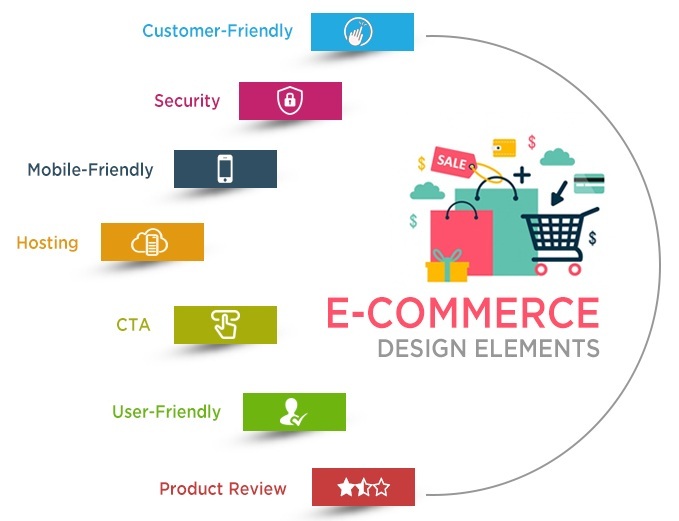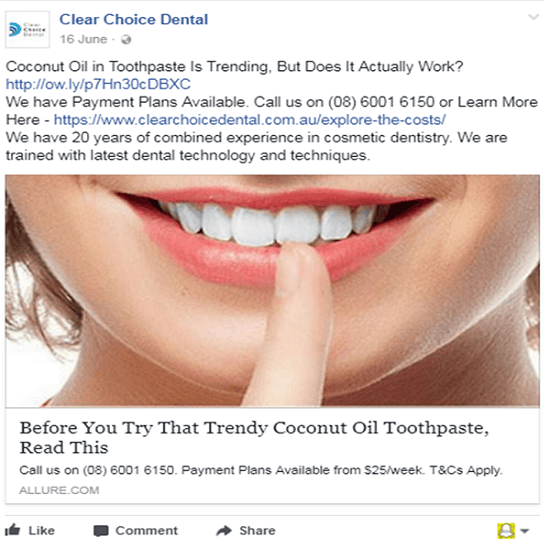Do you have an eCommerce website that is visually appealing in design? In spite of aesthetic eCommerce website design, you are somehow struggling to get enough conversions? Well, do you know you can improve your conversions for your eCommerce store to a greater extent? Yes, you can do it by improving your eCommerce website design.
Here we present top 7 ‘must-have’ elements for your eCommerce website design that can skyrocket your conversions:

1. Keep your customer in mind before and during designing
According to Lindi Wheaton, when selecting an eCommerce cart to work with for online business, keep customer satisfaction at the front of your mind. This in return will reward you with customer loyalty.
Designing an eCommerce website that is usable and accessible often requires an investment. You need to invest in quality time and dedicated resources (consultants and Web designers). Of course, this investment pays-off good returns in the long run. In any circumstances, a customer-centric website leads to conversions over a website design that is not customer-centric. Great designs give great results since users feel welcome to your site and get inspirations to buy. Tip: Design your site in such a way that screen-readers can access it. Also, embrace screen-readable descriptions of the images displayed on the page to grab the attention of visually weaken visitors.
2. Double-check about website Security & Platform
Visitors who make a transaction on eCommerce websites are always concerned about the security of their personal and financial information. Just imagine, will you buy anything online from the site which people don’t trust? No, is it? The same way you should think of security concerns for your visitors. You need to let know your potential customers that their data isn’t going to fall into the wrong hands.
You can win the trust of your customers regarding their personal and financial information security by buying an SSL (Secure Sockets Layer) certificate. This is because customers are more likely to reach for payment option while purchasing online if a website is secure. On the other hand, SSL is an effortless way to secure your website. SSL relies on encryption to make the transactions private. Its encryption prevents any malicious intent that can be dangerous for your credit card information.
Tip: You can quickly verify for SSL certification of any website:
- A URL with https:// instead of http://
- A green “lock” icon in the address bar
3. A mobile-friendly design full of creativity
We have already emphasized the importance of responsive designs. It is one of the most important website designing trends for the year 2017. Mobile-friendly designs are inevitable since mobile devices have become an indispensable part of our daily routine. Hence, as an eCommerce store owner, your eCommerce website design should pass a check of mobile-friendliness.
According to Statista.com, in 2016, global e-retail sales amounted to 1.9 trillion U.S. dollars, and it is expected to reach 4.06 trillion U.S. dollars by 2020.

The above projections indicate how online shopping is one of the most popular online activities at a global level. And, impressive revenues are earned through mobile shopping.
As an eCommerce store owner, you need to ensure that your brand and online presence doesn’t reflect another business. Your first impression will be judged by your eCommerce website design during the first visit of browsers to your online store. Your design should be unique to visitors. They should find it worth buying from in it. Invest in custom website design for your shopping cart and enjoy conversions! Tip: If you have a traditional eCommerce website design, redesign it for handheld devices. Responsive designs will let you earn more traffic and revenue, and reach out to a much wider audience.
4. Website Hosting
Have you ever got switched to another website for shopping from your favourite one just because it did not load on time? Or, have you suffered irritation while doing online shopping because the website was too slow to load products or reach to check-out page?
A slow and unresponsive eCommerce website design is a significant restraint. This is because an average online user can only bear load time of up to 3 seconds.

From both perspectives, customer experience and search engine optimization, the loading speed of your website is crucial. Some hosting platforms provide dual advantages of native SEO traits as well as offer apps to strengthen their SEO efforts. Tip: eCommerce websites that load in less than 3 seconds have a lot of benefits over websites that take longer to load.
5. A strong and compelling Call-to-Action
A strong and compelling call-to-action (CTA) is a website element that encourages customers to take a particular action while navigating your website.
Do not miss out to create your CTA buttons captivating and intriguing. Such CTAs can attract users and capture their interest in your eCommerce website design. Your CTA content should invite them to follow through by clicking on the button. CTAs facilitate you the prospect to engage users and keep them moving further down the funnel towards a conversion. According to HubSpot, by creating a CTA with a quote from a treasured customer, you can kill two birds with one stone.
CTAs should be industry-specific and far from generic. Use enticing copy that truly encourages the user to click on the button because there is a clear value in doing so. In terms of the design, buttons should be prominent on your web pages and stand out vibrantly so that the user never has to actively look for the button. Make sure your visitors get the option to take multiple actions with the influence of strong and compelling CTA.Tip: Most prominent CTA buttons in an eCommerce website design are“buy now”, “shop now”, “add to the cart”, and others. However, you should experiment a few of these with a few variations of colours, image, and content, on your own store to see which performs best!
6. User-friendly navigation
Your website navigation can lead a user either to continue his journey for long or leave the website forever. You need to ensure that your eCommerce website design is properly structured. A proper structure and easy navigation help visitors to browse and search engines to understand. As far as possible, avoid drop-down menus since it encourages visitors to skip important web pages. According to Kissmetrics, put your most important items at the beginning of the navigation and the least important items in the middle. “Contact” should be the last item on the list, putting it at the far right in top-level horizontal navigation, a standard location.

The reason behind a neat structure of the website is to ensure that visitors should always be sure of where they are on your website. Your website navigation can have an impact on both traffic and conversion. If they are aware of what they want and where they are, a conversion will not be difficult to take place.
Tip: One of the best ways to boost website navigation experience is to append breadcrumb navigation and an HTML site map in the footer section.
7. Include Product Reviews
According to the study of CompUSA® and iPerceptions®, 63% of consumers indicate that they are more likely to purchase from a site if it has product ratings and reviews.
One of the highly important but quite underrated element to promote the reputation and evaluate an eCommerce store is Product Reviews. An eCommerce store has a good collection of consumer reviews on your products has the capability to widen its customer base. Brands like Samsung, Apple, Nike, Levis, and others have gained a significant market share in a short span on the basis of positive product reviews.
It’s safe and sound to stress the importance of customers’ reviews regardless of how well you promote your online stores and products. Customers’ reviews on your products will always have higher weight age and greater impact. They not only read online reviews but also compare positive reviews with negative reviews on the same product. According to Advances in Economics and Business, “85.57% of the participants stated that they read reviews often or very often before they purchase online.
Product reviews can either make or break the ultimate decision of the buyer to buy the product. Hence, in your eCommerce website design, choose a shopping cart that has a space for product ratings and reviews.
Tip: Suggestion on how to include ‘product reviews’ in your eCommerce store.
- Incorporate a five-star rating or a 1-10 scaling system below every product.
- Make it viewable and easy for the user to assign grades (with as few clicks as possible.
- For your top reviews, create a separate landing page featuring testimonials written by registered customers.
At last!!
The ultimate goal of your eCommerce website is to sell your products and generate revenue. This end goal can be drilled down into smaller goals. These goals include email subscription, signing up, increasing social media followers, or sharing a piece of content. You can achieve all these goals with a proper eCommerce website design in a place. And, this is now possible if most of the above-mentioned traits can be taken care of. However, there are a number of tactics you can apply to help with eCommerce conversion optimization and convert your browsers into buyers.
Do you own an eCommerce store? How far your eCommerce website design is optimized for conversions? Do drop in your words in the comments section!










